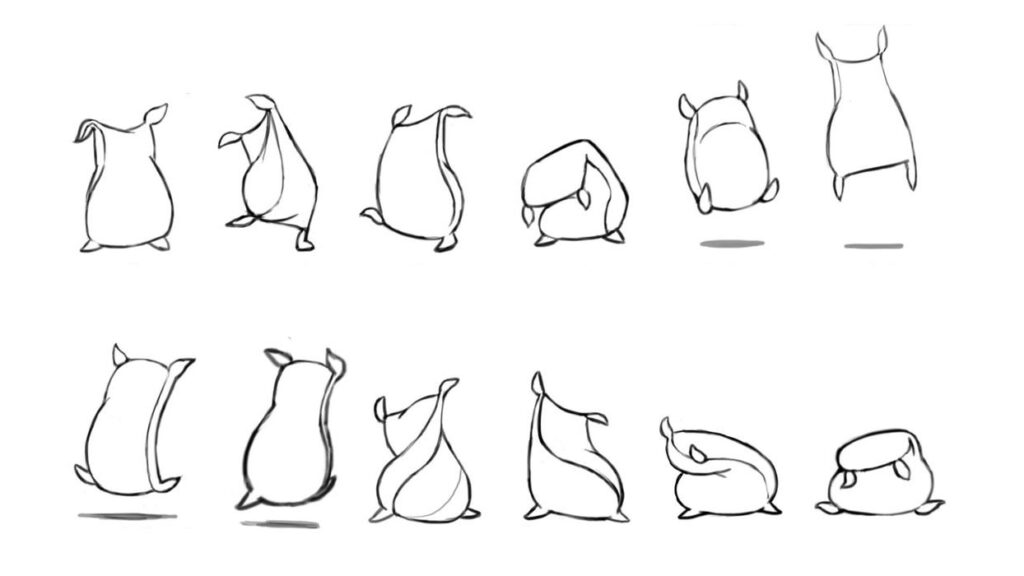
I – Vision and perception
We have seen, so far, how and to what extent the “time-dimension” can act on the perception of an object, even reduced to a very simple two-dimensional geometric graphic representation, deprived of any redundancy of characterization. By varying some space-time parameters we can obtain perceptual effects that are totally different from each other, which can range from a totally mechanical passive or cause/effect movement, up to representing a subjective intentionality and, potentially, a consciousness.
These effects can be defined as “illusions”, as they are totally attributable to our internal perceptive system, being devoid of real physical evidence; they have no volume, mass, matter: they are precisely pure representations.
Something very similar happens, if we think about it, with perspective, which in a two-dimensional projection “forces” us to perceive the third dimension, which in reality is also completely virtual, deduced or presumed, so to speak, from our perceptual system, probably even at the level of neuronal organization.
In the field of the psychology of perception, as is known, a broad debate remains open on how much and to what extent a profound “innate” conditioned reflex, in some way the result of automatic adaptive mechanisms, acts on these perceptions – or illusions. And how much is not rather the result of a subsequent adaptation, or rather of a form of learning by the subject in response to environmental stimuli.
That is, in other words, how much of this perceptive mechanism is already ready for us at birth, to immediately facilitate our orientation in the environment and therefore our survival as individuals, and how much and to what extent instead it is the experience of our interaction with visible reality to shape our perceptive faculties in order to adapt them to environmental demands. The entire discipline of the psychology of perception was conceived precisely to provide answers to these crucial questions.
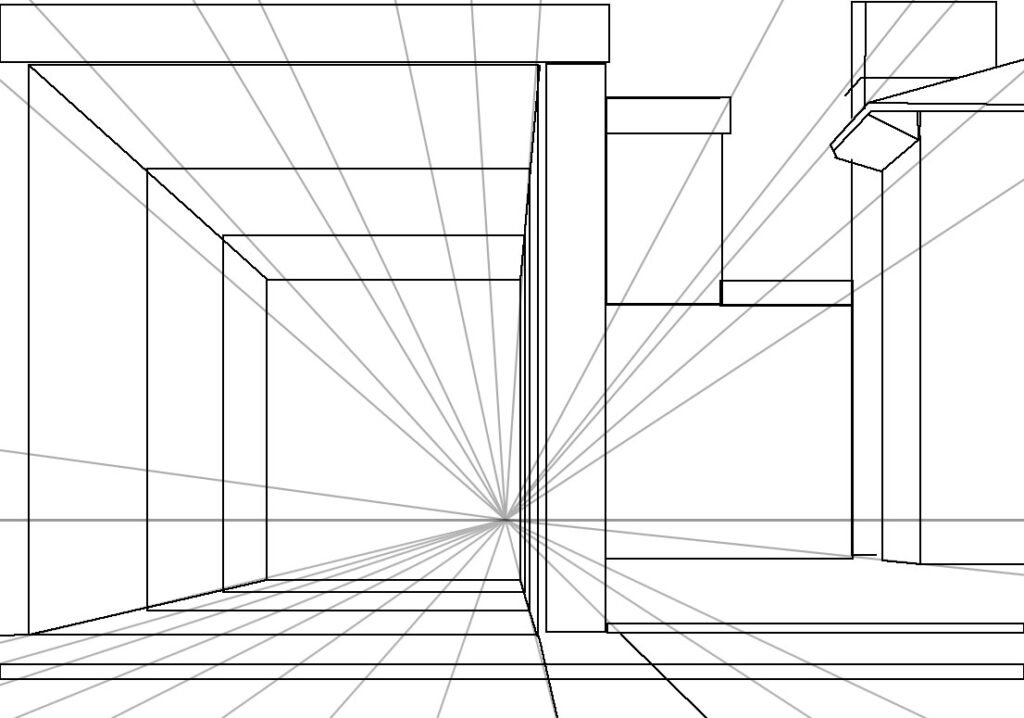
As regards perspective, it is clear that vanishing points and perspective lines do not exist in nature, however they are a codified rational representation of how our cognitive vision reorganizes reality to adapt it to our innate experience that a distant object appears more smaller than a nearby one, and that the latter partially or totally hides the distant one from view. And that the distant object “continues” to exist in its entirety of form even behind the shielding of the nearby one. Or, conversely, that if we see an object that hides and is proportionally larger than another, it “must” be closer to us.
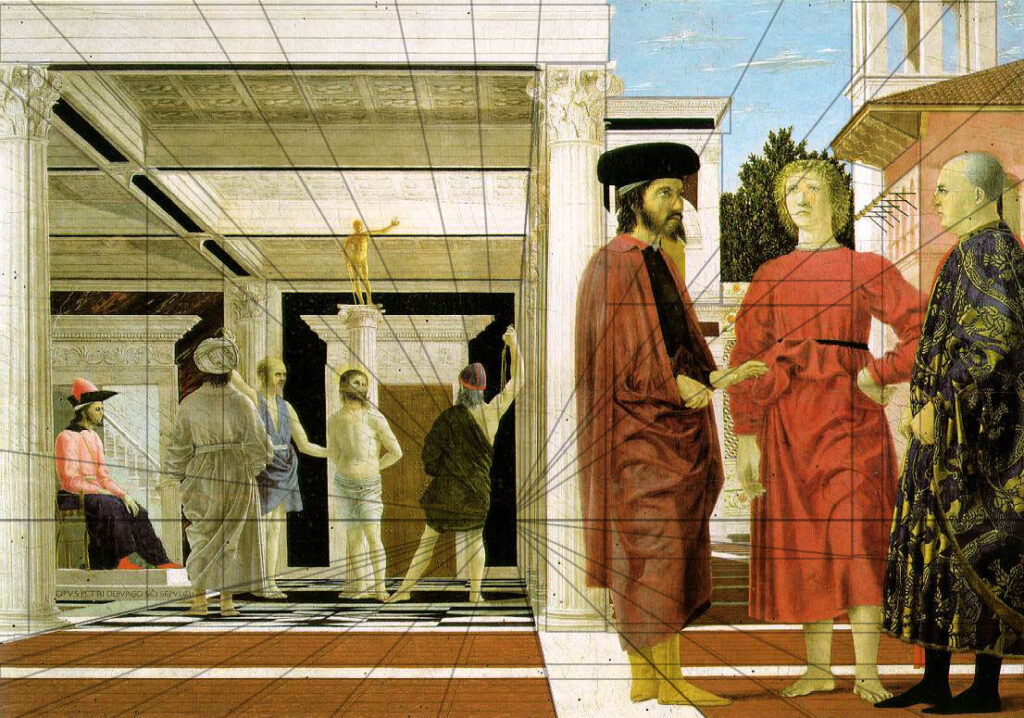
As we know, this “codified” representation of three-dimensional space on a two-dimensional plane was developed and successfully established only in relatively recent historical times (in particular, in art, after Piero della Francesca [Fig_16.03]), and this demonstrates that it is not an “innate” precognition, but is the result of a cultural accumulation of experience and knowledge which only later intervenes to enrich our ability to read and interpret the images we see or produce.
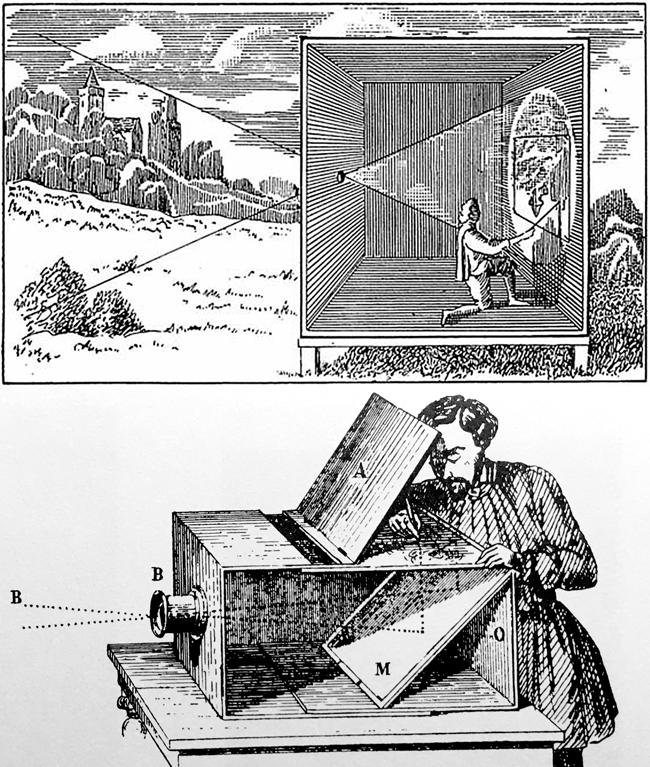
Some primitive cultures are not able to interpret perspective drawings as a three-dimensional representation, and only late, in our culture, photography – an objective “mechanical” copy of reality – confirmed our geometric predictions. After all, it was another older technical artifice, the camera obscura – in use by smart artists already in Piero’s time, and by Piero himself [Fig_16.04] – that made the theoretical-practical definition of the perspective system as we know it today.
But what matters at this point is to understand that, even in a very schematic and elementary representation, our perceptive system “cannot help but” interpret that same two-dimensional representation as “three-dimensional” [Fig_16.02].
Here I have deliberately neglected binocular perception, or stereoscopy, where other more complex physiological and optical components come into play, which go beyond our field of investigation; while the “classical” perspective remains anchored to the projection on the two-dimensional plane, and remains, despite being, as we have seen, a conscious codification of perceived reality, once again, a very constraining illusion for our cognitive system.
II – Perception and Illusion
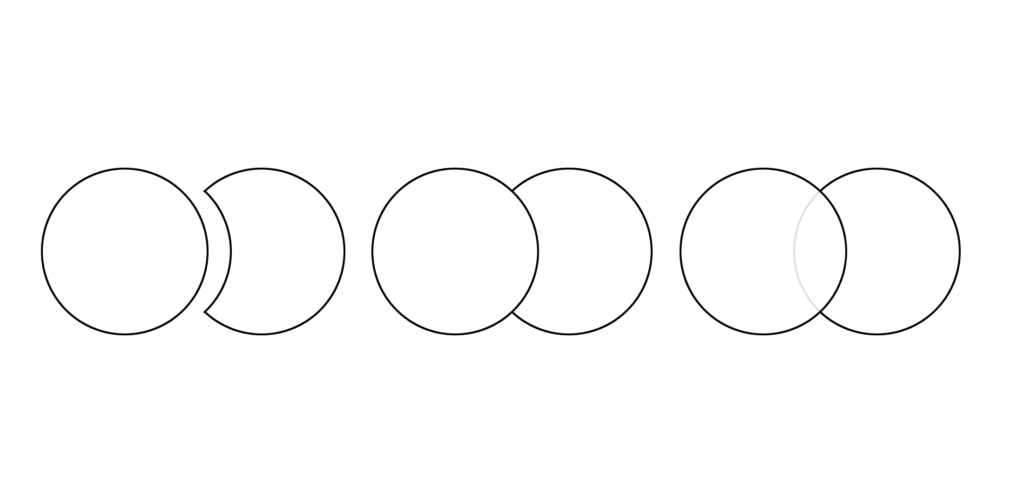
Just above we mentioned how our perceptive system creates “false perceptions”, which we called “illusions”, in an attempt to match the sensory data produced by visible reality, with the expectations created by our own cognitive system. For example, a white disk moving frame by frame on a black background at 25 Fps is interpreted as “a ball moving on a plane”.
A white disk placed next to a crescent moon shaped object cut to match its perimeter is perceived as a disk that overlaps with another disk, partially concealing it [Fig_16.05].
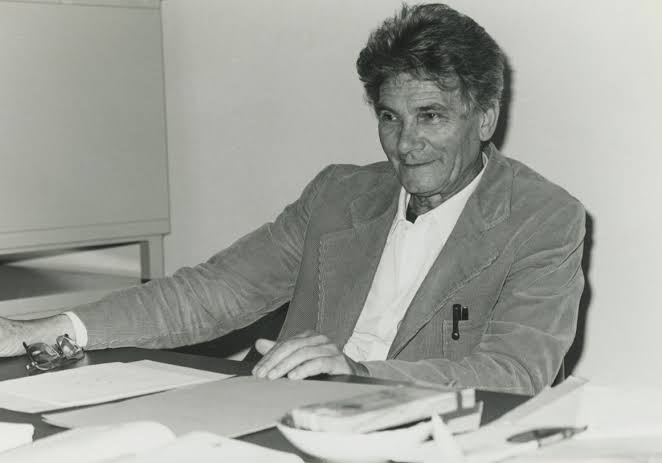
To better understand the thin border that exists between illusion and perception, there is nothing better than mentioning at this point one of the most classic (and well-known) representations of experimental psychology, that of the so-called “quasi-perceptive triangle” invented in 1955 by professor and psychologist Gaetano Kanizsa (whom I had the privilege of having as a teacher during my years in Trieste).
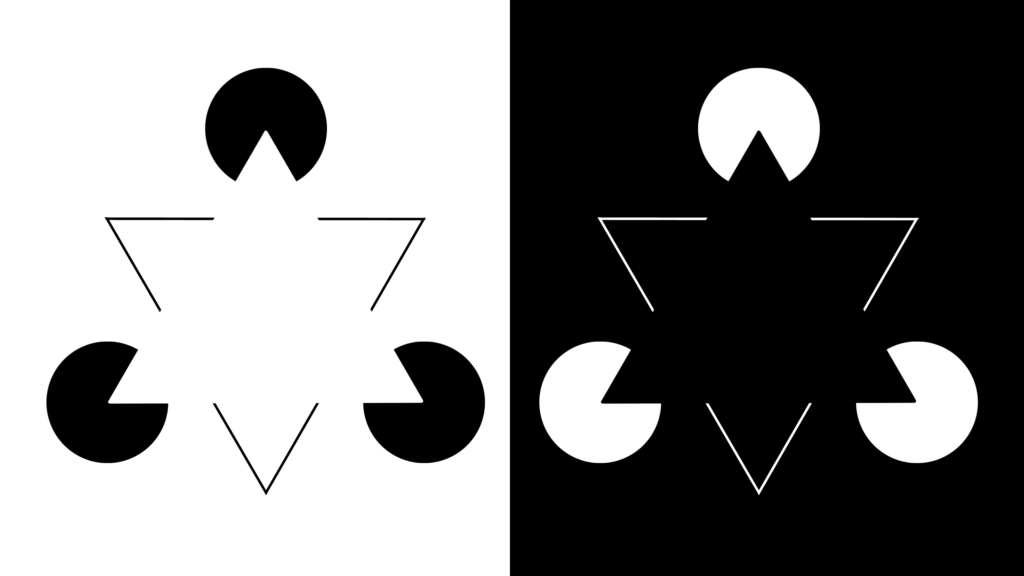
As is known, in this representation the central triangle, in ideal light conditions, appears to an ingenuous observer not only as a visible figure and describable as a “triangle”, but also significantly “brighter” compared to the background, when evidently there are no lines or contours that define this figure, and the background is completely uniform.
In other words, our brain instead of perceiving reality as it is, i.e. a set of black geometric figures arranged on a white background (or vice versa) in a certain order in a two-dimensional space, reorganizes it by creating correlations based on its expectations, dictated by experience and our perceptive system.
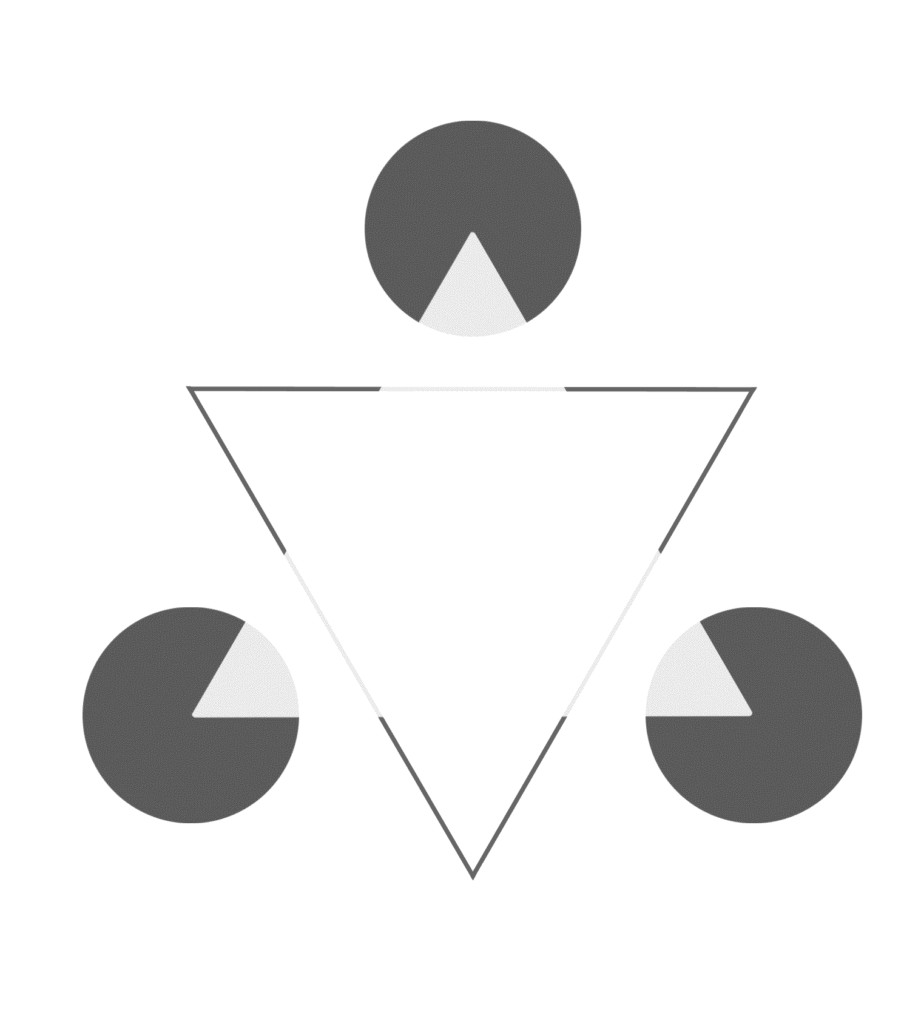
In this case, an innate law of continuity is imposed whereby a form that overlaps with other forms must necessarily cover the latter, which we imagine as continuous beneath it [Fig_16.08]. Our mind then reorganises the image in a way consistent with its innate expectations, whereby the black figures overlap with the white background and, for continuity, presuppose the presence of a white triangle above them, which in turn also above the white background, and to adapt it to this visual scheme, it virtually accentuate its brightness, creating a “contrast margin” (the outline of the virtual triangle, as illusory contours) which is effectively non-existent in the real physical image.
The so-called optical illusions exploit this coercive characteristic of our vision to create completely virtual images, non-existent in objective reality, but present in subjective vision. The triangle in [Fig_16.07-16.08] does not “exist” on the sheet of paper, it does not have an outline, a margin, a contrast that differentiates it from the background, yet it is clearly present in the observer’s vision, so much so that the majority of subjects will without hesitation describe it as such. This clearly demonstrates how our “innate” preceptive system precedes, and in some cases can even replace, the cognitive one in a scale of priorities.
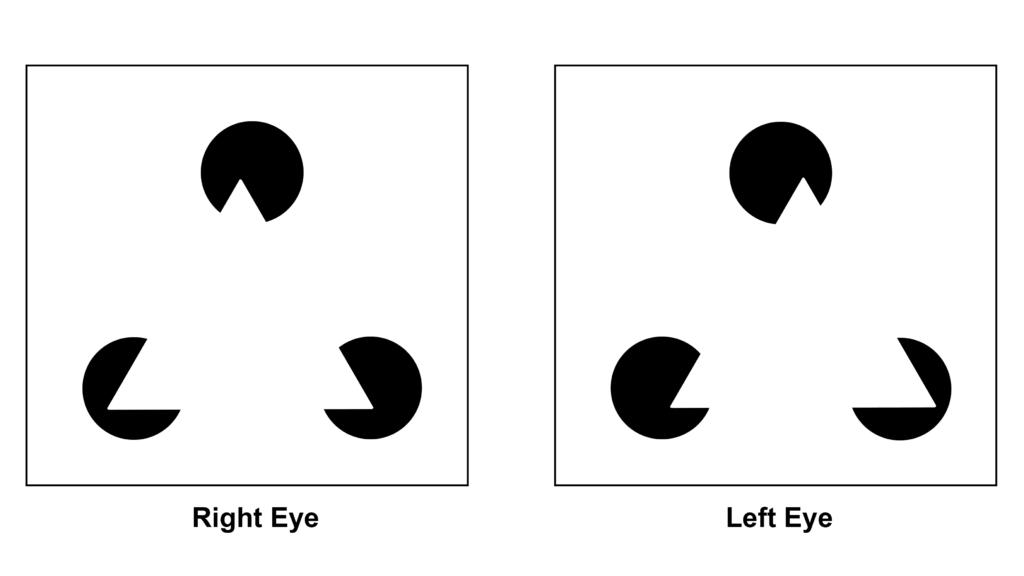
If you can collimate your binocular vision with this figure, you will be able to see a rather bright triangle that stands out in depth from the black disks in the background.
Similarly, as we have seen, the laws of movement work which determine the phenomena we described above as “causality”, “intentionality”, “rebound”, “jump”. In any case, these are patterns preordained by our perceptive system, regardless of our knowledge and experience of the environment and the objects that trigger the events described. Our brain is, so to speak, biologically set (and therefore in a certain sense even forced) to interpret that certain temporal sequence of images as an ongoing event, and no longer as a series of fixed images one independent of the other.

The moment we add a fourth element, squash and stretch, things change. In fact, squash and stretch is no longer an “innate” perceptive parameter, but comes from our active interpretation of reality, a scheme learned from experience, from culture, and codified in a geometric synthesis, just like vanishing points and lines are in the traditional perspective representation, from the Renaissance onwards.
And it is precisely at this point that mechanics is replaced by biology, by life: we could say that in our eyes an object becomes the actor of a voluntary and conscious action, acquiring a body, a living self.
III – From Illusion to Representation
This is therefore why our “flour sack” is not as simple and trivial an exercise as it may appear at first glance: it is instead a crucial example to fully understand these dynamics. Here we are still in a delicate balance along the very thin line that discriminate the innate, what our perceptive system presents to us as a predictable representation of the world, from the learned, what we add to it from our experience of this same world and its physical and material reality.
As you may have noticed, in the classic examples the draftsmen usually add small appendages to the four corners of the main shape, to symbolically simulate limbs, or extremities, hands and feet. This helps to characterize the “character“, which is devoid of other clues, such as eyes, a face, a head and a body, but in my opinion it is superfluous here. The same results can also be achieved with a perfectly clean shape, deprived of any hint of characterization.
For this example [Fig 16.10] I eliminated all the appendages, and I kept the same spacing and timing scheme as the jumping ball presented above [Fig 16.09], to demonstrate how this scheme applies almost without substantial modifications to a subject apparently more complex than a simple ball. What appears for the first time here, and which substantially changes the quality of perception, are at least two additional pieces of information, defined precisely by the application of the Squash and Stretch and the articulation of the shape:
A – The recognisability of the object as the stylised image of an actual “sack of flour”.
B – The perception of volume, weight, upper and lower part of the body.
It is these clues, projected onto the object by our experience and culture, that transform the object into a “sack of flour”, and therefore the “sack of flour” into the character “Flour Sack”. Which, particularly when we move or animate it, acquires expressions, even a hint of arms, legs, head and body, all virtually. And this happens because we project onto this character our cognition and our experience of how an “animated” character should move and feel.
It is no coincidence that all this has always been widely used by animation, throughout its history: from the whistling sirens in “Steamboat Willy” [16.11], to the naughty Sugar Bowl in “The Sword in the Stone” [16.12], to the showy Carpet in “Aladdin” [16.12] (which is, among other things, a spectacular, almost direct application of our Flour Sack), simply because it is something that only the animation technique can achieve.
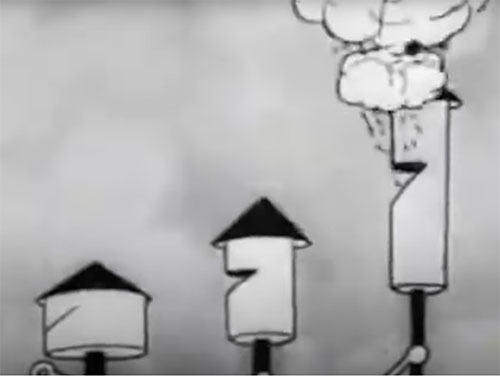
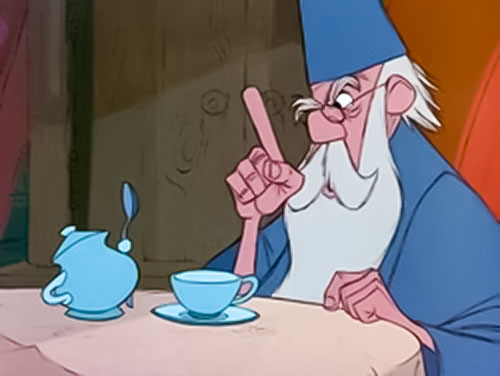
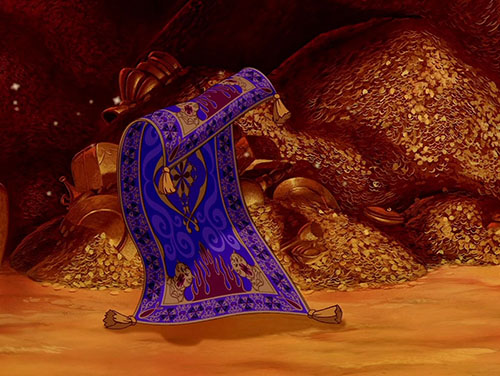
Here my effort is above all to try to get out of the didactic formula, which is the most common approach with which these exercises are presented, and to understand their profound meaning, which goes well beyond the pure mechanics of an exercise.
As we said, our “flour sack” is no longer the “flour-sack-object”, but the “Flour-Sack-Character”, and as such it is not only capable of performing movements on the stage, but to express emotions through them, to act, speak, narrate, and therefore, in this way, it becomes in every sense an “actor”.
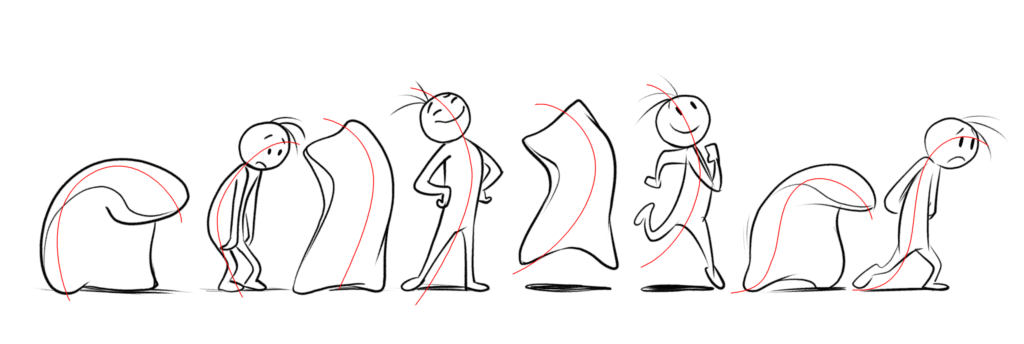
In the classic illustration we see how we project into the poses – and movements – of the flour sack attitudes that bring us back to a humanized body language, or rather what experience and culture has taught us about it: a curved and floppy flour sack is sad and demoralized, one who is erect and strutting is bold and excited, one who jumps lightly is lively and happy, one who shuffles along with slow steps is humiliated and heartbroken.
So far we have limited ourselves to body language, but the same process of synthesis and projection also occurs, and to an even greater extent, throughout that immense territory which is that of facial expressions.
Also in this case our system starts from a series of innate elementary schemes and is then applied to increasingly complex and “subtle” representations, as we gradually introduce in it our experience and the learning, also from a technical point of view, of the depiction.
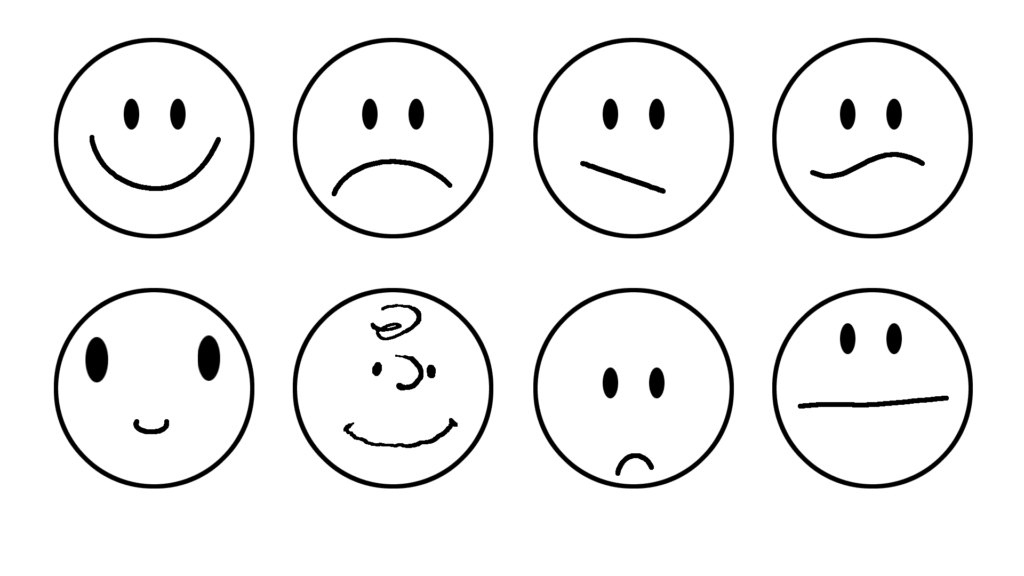
The minimal graphic equivalent of a face is, as we know, the so called “smiley” [Fig_16.15], where a simple circle, two tiny points and an arc section arranged in a certain way suggest to us, or rather, actually make us recognise a “face” in a way so overbearing that we are surprised by it every time. This is certainly an innate pattern, the one that pertains to the “reading” of a human face, indispensable for our survival. What is even more surprising is that by appropriately modulating the shape and arrangement of these elements we can obtain a very vast range of “expressions”, and even subtle nuances of them. And we can see the consequences of this throughout the history of the graphic representation of a “human” face, from the “laught and tears” masks of the Greek Theatre to… Charles M. Schulz’s Charlie Brown.
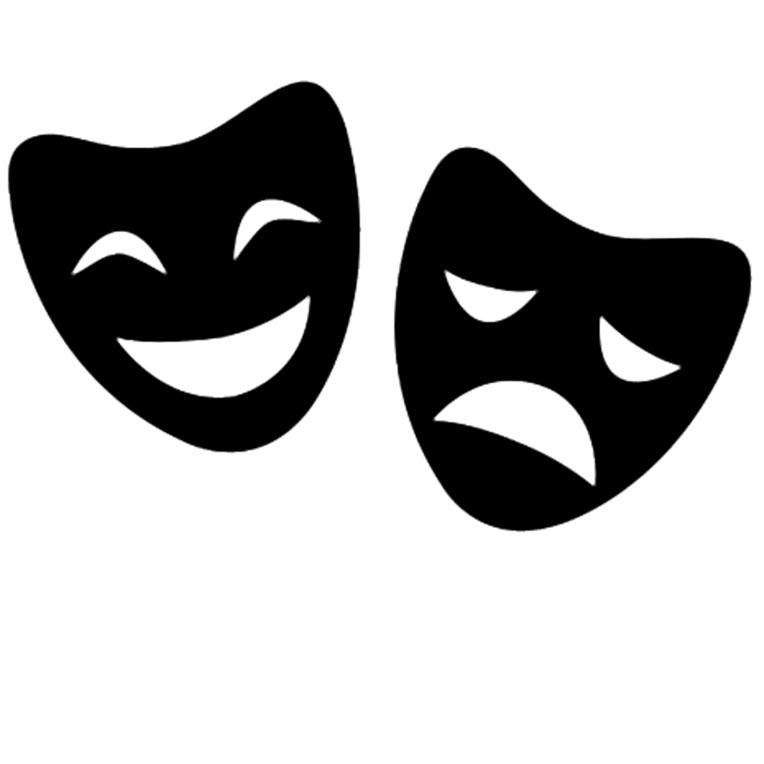
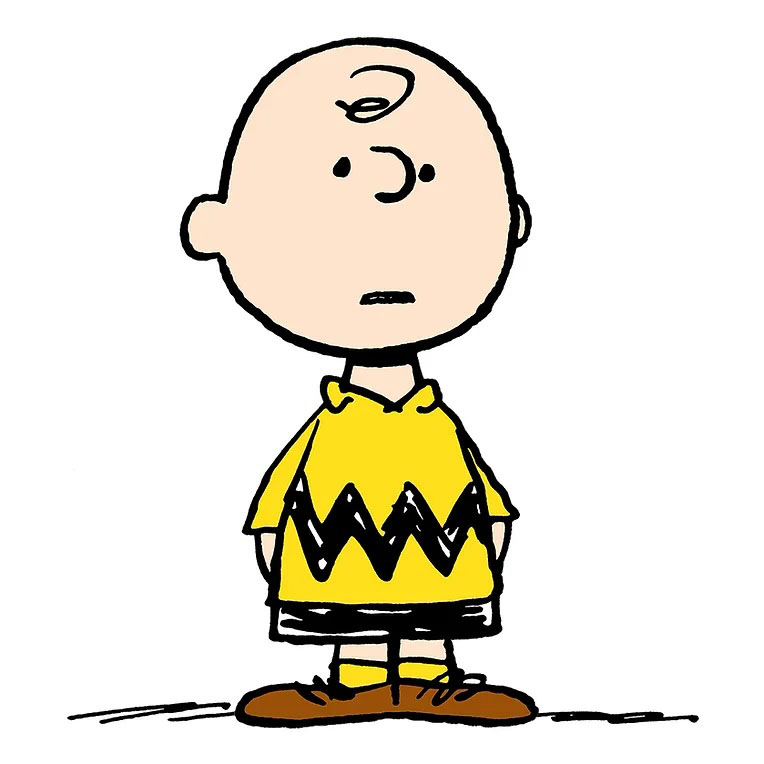
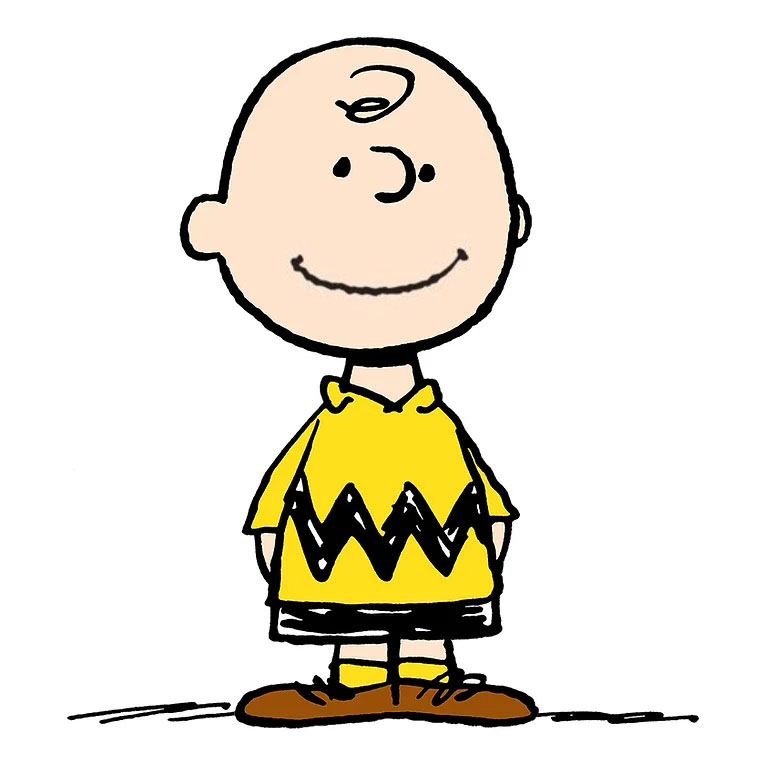
The thing that always surprises me, however, even after decades of practice in the art of animation, is how a character, especially if animated in an excellent way, acquires a truly autonomous life, and in some way seems to detach itself (himself?) from the control of those who animated it. I think we’ve all had a similar experience when reviewing our own animations, especially after a certain amount of time.
Yet we know well that our character, without the intervention of our hands inside its secret mechanisms or to handle the invisible threads that support it, would be, literally, an empty bag, an immobile and lifeless puppet.
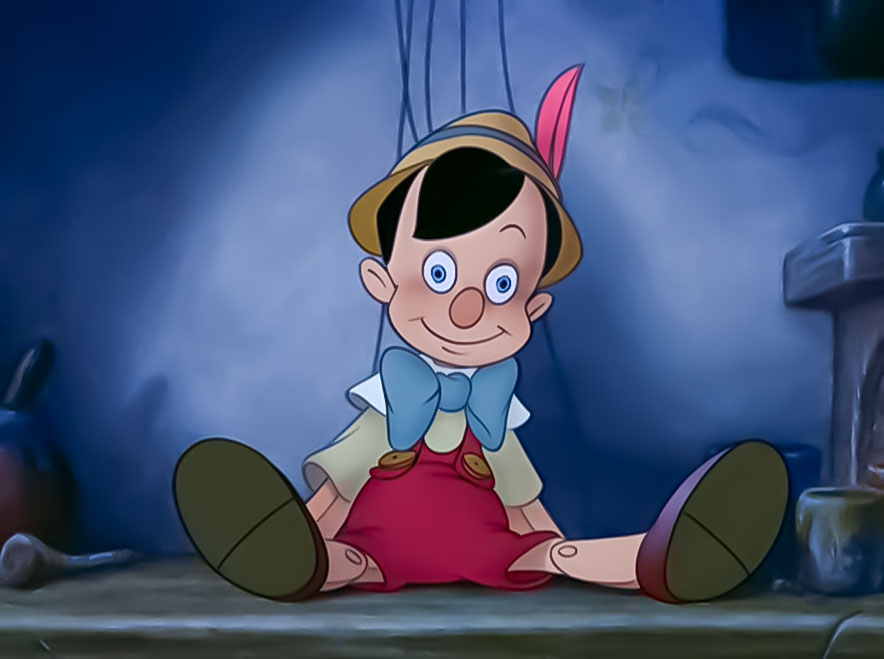
So, who is really the “actor” in this play?
Next Article: 17 – Acting Is Feeling (Part II)
